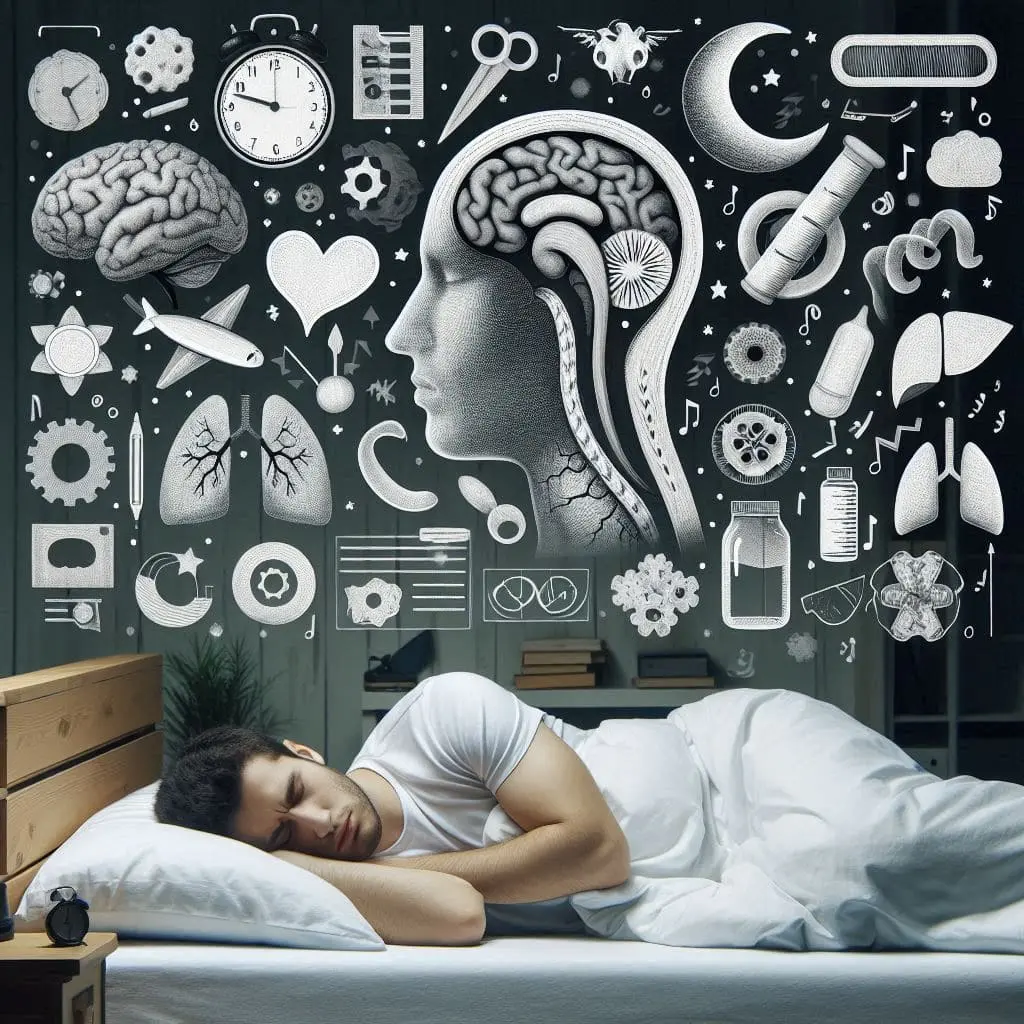Sleep is important for both our physical and mental health. It affects many body processes, such as memory, the immune system, and controlling emotions. However, many people have trouble getting restful sleep because they have a sleep problems. In this in-depth guide, we’ll talk about the most common types of sleep disorders, their signs, how to diagnose them, how to treat them, and how to get better sleep.
What are sleep disorders?
Sleep disorders are medical conditions that disrupt normal sleep patterns, impacting sleep duration, quality, or timing. These disruptions can impair daytime functioning and significantly reduce overall quality of life. While occasional sleep disturbances are common, persistent sleep problems may indicate an underlying sleep disorder.
Common Types of Sleep Disorders
Insomnia
Individuals with insomnia have trouble falling asleep, staying asleep, or having restful sleep, even though they have had ample opportunities to do so. Insomnia can be acute (short-term) or chronic (long-term), and it can either cause or be a symptom of other physical or mental health issues.
Sleep Apnea
Sleep apnea is characterized by the cessation of breathing during sleep. This can result from a physical obstruction in the airway (obstructive sleep apnea) or a failure of the brain to properly signal the respiratory muscles (central sleep apnea). Common indicators of sleep apnea include loud snoring, gasping or choking during sleep, and persistent daytime fatigue.
Restless Legs Syndrome (RLS)
People with RLS feel uncomfortable feelings in their legs, like crawling, tingling, or itching, that get worse when they’re not moving. Symptoms usually happen in the evening or at night, which makes it hard to fall asleep.
Narcolepsy
Narcolepsy is a neurological disorder characterized by excessive daytime sleepiness, often accompanied by sudden episodes of muscle weakness (cataplexy). Individuals with narcolepsy may also experience hallucinations as they fall asleep or wake up (hypnagogic or hypnopompic hallucinations) and disrupted nighttime sleep.
Parasomnias
Asthma includes sleepwalking, sleep terrors, nightmares, and REM sleep behavior disorder (playing out dreams during REM sleep).
Symptoms of Sleep Disorders
Symptoms of sleep disorders vary depending on the specific condition but may include:
- Having trouble falling or staying asleep
- Excessive slumber during the day
- Breathing pauses and loud snoring while one is asleep
- Unrest or pain in the lower limbs
- Unexpected muscular atrophy or loss of control
- Excessive or vivid dreams
- Night terrors or nightmares
- Unruly actions during the night
Diagnosis and Treatment Options
A full evaluation, such as a review of the patient’s medical history, physical exam, analysis of sleep records, and sleep tests (polysomnography or home sleep apnea testing), is usually needed to diagnose sleep disorders. There are different ways to treat sleep disorders based on the type and severity of the problem. Some examples are:
Lifestyle modifications
Lifestyle modifications can significantly improve sleep quality. These include maintaining a consistent sleep schedule, establishing a relaxing pre-sleep routine, avoiding stimulants such as nicotine and caffeine close to bedtime, and ensuring a comfortable sleep environment with a supportive mattress and a dark, quiet room.
Cognitive-behavioral therapy (CBT)
This type of treatment helps people figure out and change the negative thoughts and behaviors that make it hard to sleep, leading to better sleep patterns.
Medicines
Depending on the type of sleep disorder, people may be given sleep aids, stimulants (for narcolepsy), or medicines that control dopamine levels (for RLS).
Therapy with continuous positive airway pressure (CPAP): Patients with obstructive sleep apnea often use CPAP, which includes wearing a mask that is hooked up to a machine that delivers pressurized air to keep the airway open while they sleep.
Surgery
If someone has obstructive sleep apnea, they may need surgery to remove extra muscle or move their jaw.
Tips for Better Sleep
Getting professional help for sleep disorders is important, but developing good sleep habits can also help with sleep hygiene and general health.
- Set a regular sleep routine. Try to go to bed and wake up at the same time every day, even on the weekends.
- Do something relaxing before bed to let your body know it’s time to relax. For example, take a warm bath, read a book, or do deep breathing or meditation to help you rest.
- For a good night’s sleep, make sure you have a nice mattress and pillows, a cool room, and not too much noise or light.
- Screens like phones, computers, and TVs should not be used right before bed because the blue light they give off can mess up your sleep-wake cycles.
- Don’t drink coffee, alcohol, or eat big meals right before bed because they can make it hard to sleep.
- Do some kind of physical action every day, but don’t do anything too intense right before bed.
- If you have trouble sleeping on a regular basis, you should see a doctor to get a personalized evaluation and treatment suggestions.
Conclusion
Sleep disorders can significantly impact an individual’s quality of life. However, with accurate diagnosis, appropriate treatment, and the implementation of healthy sleep habits, these conditions can be effectively managed, leading to restorative and energizing sleep. Prioritizing good sleep hygiene is crucial for overall health and well-being, enabling individuals to feel refreshed and prepared for daily activities.








Leave a Reply